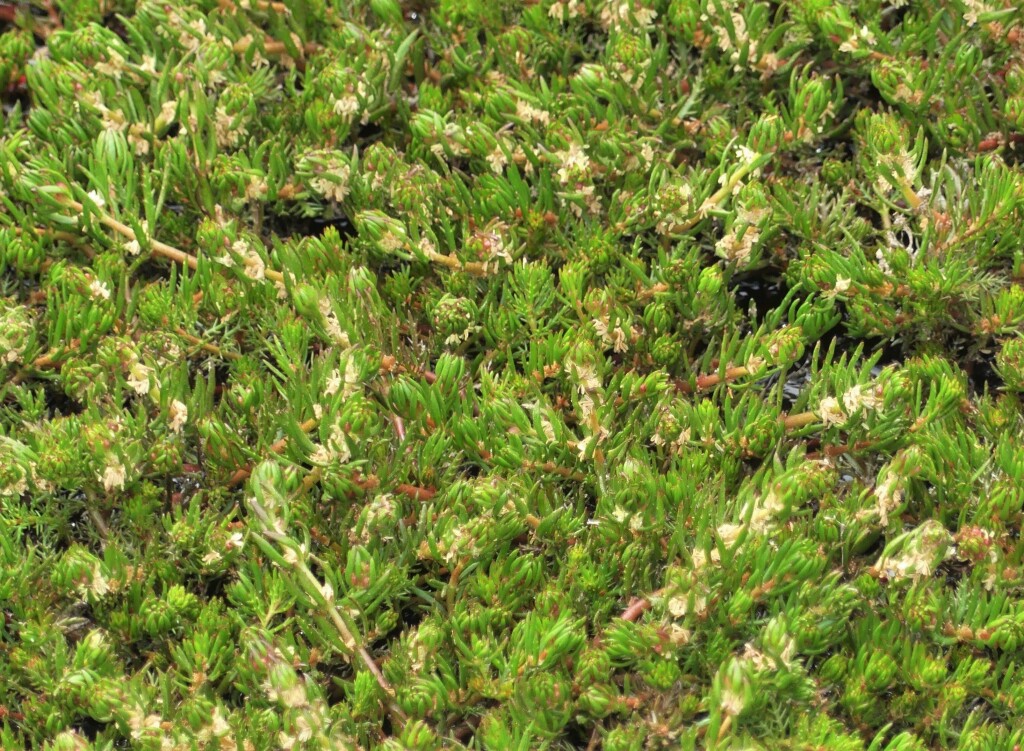Myriophyllum variifolium
Hook.f. Varied Water-milfoilPerennial aquatic herb; stems 30–50 cm long, to 5 mm diam., rooting at nodes in shallow water. Leaves dimorphic; submerged leaves in whorls of 4 or 5, orbicular, mostly 11–20 mm long, pectinate, with 9–15 well-spaced pinnae; emergent leaves in whorls of 5, linear to terete, mostly 8–15 mm long, margins entire or lowermost 3 or 4 denticulate. Bracteoles of male flowers ovate, c. 1.2 mm long; bracteoles of female flowers smaller; flowers solitary, sessile. Male flowers: sepals 4, orbicular to oblong, 0.6–0.8 mm long; petals 4, 2.5–3.5 mm long, yellow to reddish, caducous; stamens 8. Female flowers: sepals and petals absent; ovary 4-celled, styles sessile, stigmas white, fimbriate. Fruit cylindric, yellow-brown to pale reddish; mericarps cylindric, 1.4–1.5 mm long, truncate, smooth or minutely and sparsely papillose. Flowers Oct.–Mar.
Wim, VVP, VRiv, MuF, GipP, OtP, WaP, CVU, GGr, DunT, EGL, EGU, HSF, HNF, OtR, MonT, VAlp. Also SA, Qld, NSW, Tas. Found in eastern and south-western Victoria where it grows in still or slow-flowing water.
Only reliably distinguished from Myriophyllum simulans by the shape, size and colour of the mature fruits. The two species intergrade in south-western Victoria and South Australia.
Jeanes, J.A. (1996). Haloragaceae. In: Walsh, N.G.; Entwisle, T.J., Flora of Victoria Vol. 3, Dicotyledons Winteraceae to Myrtaceae, pp. 887–908. Inkata Press, Melbourne.
 Spinning
Spinning


